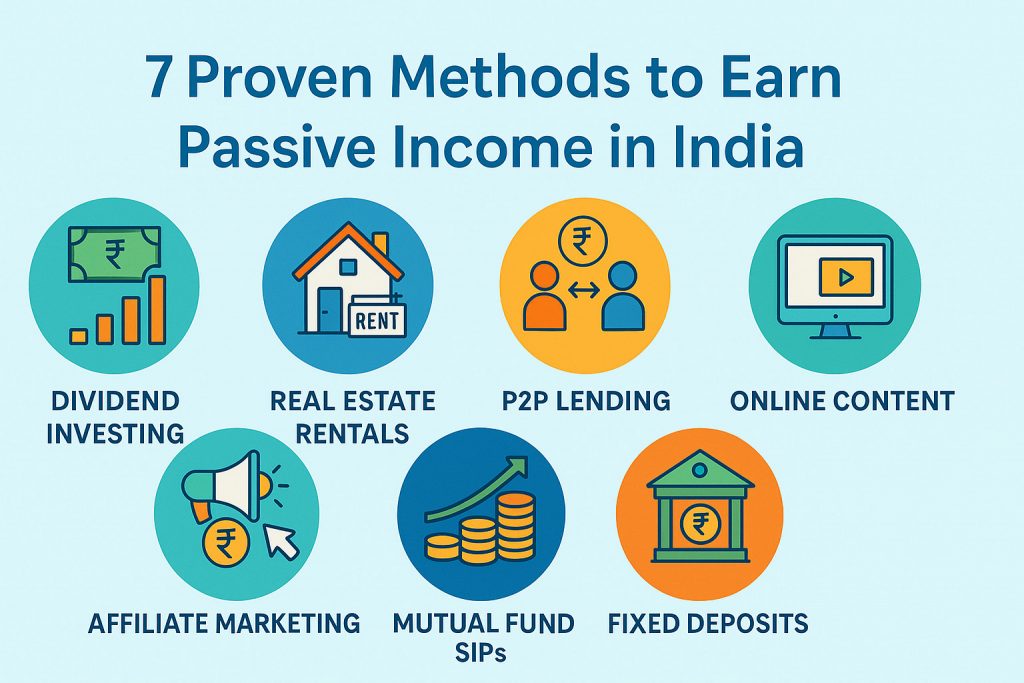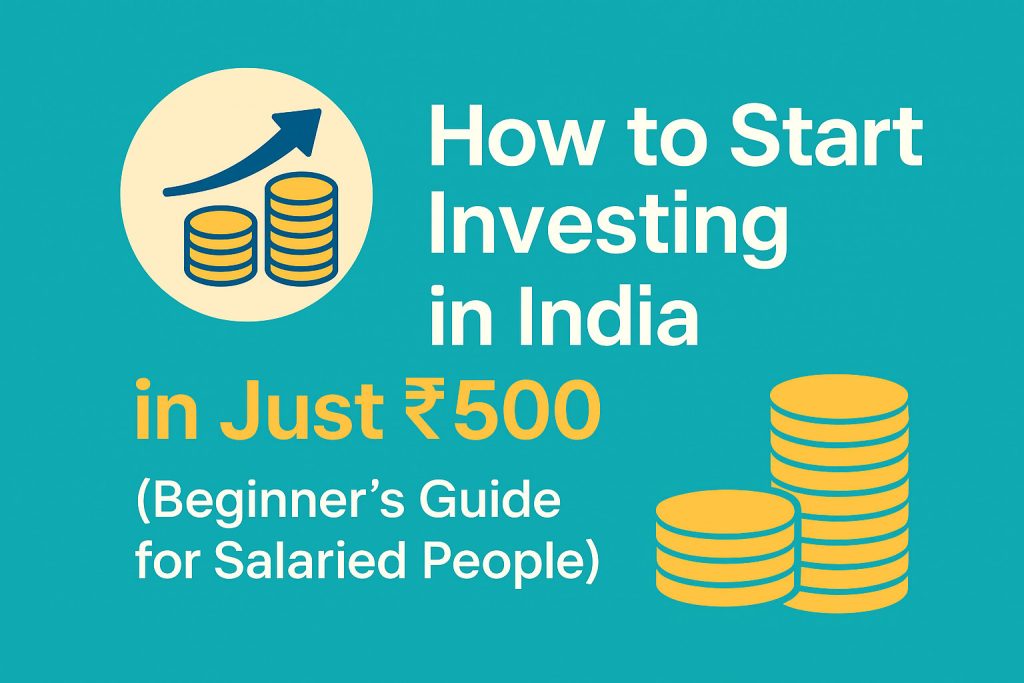How to Earn Passive Income in India: 7 Proven Methods
Imagine waking up every day to money already flowing into your bank account, regardless of whether you clock in at your 9-to-5 job or not. Sounds appealing, right? Welcome to the world of passive income—where your money works tirelessly for you, rather than the other way around. Especially in India, where inflation continues to rise, creating passive income streams has become not just desirable, but essential.
If you’ve been wondering how to create passive income, you’re in the right place. Let’s dive deep into seven proven methods to earn passive income in India.

1. Dividend Investing
Dividend investing is one of the simplest ways to start earning passive income in India. This involves investing in high-dividend-yielding stocks or mutual funds that distribute dividends regularly.
For instance, companies like ITC, Coal India, and Power Grid have historically provided generous dividend yields. By building a diversified portfolio of dividend-paying stocks or mutual funds, you could enjoy regular income without actively managing your investments.
Pro Tip: Always research and diversify your portfolio to minimize risks.
2. Rental Income from Real Estate
Real estate continues to be one of India’s favorite passive income sources. Purchasing property and renting it out generates steady monthly income.
Thanks to booming urbanization and rising property values, real estate in cities like Bangalore, Pune, and Hyderabad offers attractive rental yields. If managing physical properties seems cumbersome, Real Estate Investment Trusts (REITs) offer a hassle-free alternative with excellent returns.
Example: Investing ₹20 lakhs in property yielding 5% annual rent can provide around ₹8,333 monthly.
3. Peer-to-Peer (P2P) Lending
Peer-to-peer lending platforms connect borrowers directly with lenders, bypassing traditional banks. Platforms like Faircent, LenDenClub, and LiquiLoans offer attractive returns, often ranging from 10% to 18% annually.
Caution: While P2P lending offers high returns, diversification across many borrowers reduces default risk significantly.
4. Creating Online Content
Whether it’s a YouTube channel, a blog, or a podcast, online content creation is becoming a powerful passive income method in India. Platforms like YouTube and blogging websites offer monetization via ads, sponsorships, and affiliate marketing.
For example, a well-run YouTube channel can generate substantial income through Google Adsense revenue and sponsored content. Successful Indian YouTubers regularly earn lakhs monthly from passive ad revenues alone.
SEO Tip: Use high-search-volume, low-competition keywords in your blog and video titles to attract steady organic traffic.
5. Affiliate Marketing
Affiliate marketing involves recommending products and services online and earning commissions for sales driven by your referrals. Websites like Amazon Associates, Flipkart Affiliate Program, and ClickBank offer excellent affiliate earning opportunities.
For instance, creating niche blogs reviewing consumer electronics or financial products can provide a consistent passive income stream. Whenever someone purchases through your referral link, you earn commissions, often ranging from 3% to 12%.
Pro Tip: Choose a niche that interests you and build genuine, useful content to establish credibility and trust.
6. Investing in Mutual Funds via SIP
Systematic Investment Plans (SIPs) in mutual funds represent one of India’s most trusted passive investment strategies. Investing a fixed amount monthly through SIPs can accumulate significant wealth due to the power of compounding.
A small investment, say ₹5,000 monthly, into an equity mutual fund with an average return of 12% annually, can grow substantially to over ₹11 lakhs in 10 years, creating a substantial corpus generating passive returns.
Tip: Automate your SIP investments to maintain discipline and consistency.
7. Fixed Deposits and Bonds
Though traditional, fixed deposits (FDs) and bonds are reliable and low-risk passive income sources. Banks and NBFCs provide fixed returns, typically ranging from 6% to 8% annually. Similarly, government and corporate bonds can offer safe, predictable income.
Example: Investing ₹10 lakhs in an FD at 7% annually generates around ₹70,000 annually—approximately ₹5,833 monthly passive income.
How to Choose the Best Passive Income Method for You?
Choosing the best passive income stream depends on your financial goals, risk appetite, and the amount of initial capital you have:
- High capital, low risk: Real estate, fixed deposits, bonds.
- Moderate capital, moderate risk: Dividend investing, mutual fund SIPs.
- Low capital, higher risk: Online content creation, affiliate marketing, P2P lending.
Practical Tips to Get Started
- Start small and scale gradually.
- Diversify your investments to spread risk.
- Reinvest passive earnings to compound your returns faster.
Final Thoughts
Building passive income streams in India can greatly enhance your financial security and freedom. While it requires some initial effort and investment, the long-term benefits outweigh these initial challenges significantly. With patience, consistency, and smart financial strategies, passive income can indeed turn into your primary income source, transforming your life profoundly.
Start your passive income journey today and step closer to financial independence!
Read also What Is a Good Salary at Age 30 in India? Eye-Opening Question.



